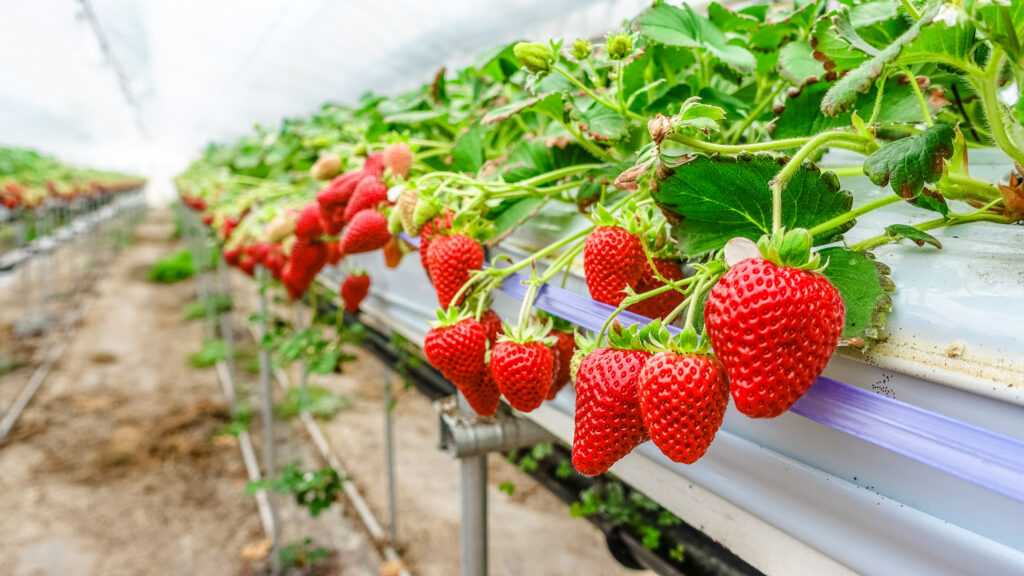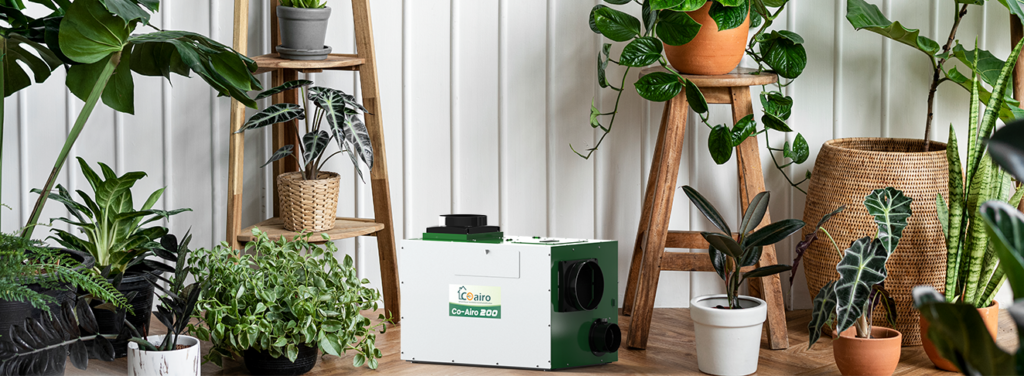Maintaining the right humidity in a greenhouse is core to crop health, yield, and post-harvest quality. Too much moisture accelerates fungal and bacterial disease, slows transpiration and nutrient uptake, and degrades structures and equipment. Dehumidifiers are a practical tool in the greenhouse manager’s toolbox — not a cure-all, but an effective mechanical method to remove water vapor when natural ventilation and passive measures are insufficient.
For experienced U.S. growers, the decision to deploy a dehumidifier should be driven by measurable conditions (persistent RH above target ranges, frequent condensation, disease outbreaks) and by the constraints of your site: climate, greenhouse tightness, crop value, and operational cost.
Below I lay out when dehumidifiers are needed, how and why they work in greenhouse environments, when not to run them, how to select and place units, and practical alternatives and complements to keep humidity under control.
When should you run a dehumidifier in your greenhouse?
Nighttime humidity spikes
In temperate climates and in winter, RH commonly peaks after sunset as temperatures fall and vents are closed to conserve heat. If RH stays above ~80% for extended night hours, condensation forms and disease risk climbs; a dehumidifier run overnight can prevent dew formation and fungal germination.
Rainy or high-humidity seasons
In spring/fall rainy periods or humid coastal/tropical locales, incoming air is already moisture-laden. Ventilation can bring in heat but not dry the air; mechanical dehumidification is useful when outside dew points are high.
High-density plantings & high-transpiration crops
Crops with heavy leaf area index (dense transplanted vegetables, herbs, floriculture, or cannabis) produce large vapor loads. After irrigation or during peak growth, a dehumidifier helps prevent sustained RH spikes in canopy microclimates.
Rule of thumb: if RH is repeatedly ≥80% for several hours or you see regular condensation on structure or leaves, add dehumidification to your control strategy.
When not to run a dehumidifier ?
When the problem is poor air distribution, not absolute humidity. If RH is locally high because of stagnant pockets (under benches, inside dense canopy zones), a dehumidifier will have limited effect unless circulation and ventilation issues are corrected first.
Running a dehumidifier can be counterproductive in several cases:

Hot, dry outdoor air
When the outdoor air has a low dew point and temperature and is sufficiently dry, simply introducing outdoor air through proper ventilation can reduce indoor humidity. In this case, using a greenhouse dehumidifier has no economic significance.
In regions like parts of the U.S. Southwest, outside air is typically dry. Ventilation is cheaper and more effective than mechanical drying. Running a dehumidifier wastes energy and risks over-drying.
When RH is already low (below ~50%)
Many crops suffer from overly dry air — stomata close, transpiration becomes excessive relative to water supply, and plants can be stressed. Avoid dehumidification when RH is within or below crop-optimal ranges.
Young seedling and propagation stage
Seedlings, cuttings, and transplants often benefit from RH in the 60–80% range to prevent desiccation and support root initiation. Dehumidification at these stages can increase transplant shock and reduce survival.
Will a dehumidifier work in a greenhouse?
Yes — greenhouse dehumidifiers work and are a proven method to lower indoor vapor pressure.
Most compressor greenhouse dehumidifiers draw in warm, humid air, cool it below its dew point to condense water, collect condensate, and reheat and discharge drier air. Desiccant units use hygroscopic materials to adsorb water and then purge it. In either case, the net effect is a reduction in absolute humidity (g/kg dry air) and lower RH at the operating temperature.
Lowering RH below thresholds required for sporulation and germination of pathogens (common targets: keep RH <70–75% during susceptible stages) reduces outbreaks of Botrytis, powdery/downy mildews, and other foliar diseases.
When vapor pressure deficit (VPD) is in the optimal zone, stomatal conductance and nutrient uptake improve, supporting stronger vegetative growth and more consistent fruit set.
Benefits of a Dehumidifier in a Greenhouse
Beyond moisture control, a greenhouse dehumidifier provides several benefits to the plants. It creates a stable growth environment for plants free of excess moisture and humidity. Here are some of the benefits of a greenhouse dehumidifier.

Prevents Plant Diseases
A greenhouse dehumidifier balances the moisture levels of the soil and the atmosphere of a greenhouse. High humidity encourages fungal diseases such as grey mold (Botrytis cinerea) and powdery mildews in plants. These diseases cause huge yield damage to plants. A dry surface does not promote the growth of fungal spores. Thus, plants can thrive more productively.
Improves Plant Growth and Productivity
High moisture in the atmosphere affects the pollination of plants. Pollens clump together and cannot reach the pistil of the flower. A greenhouse dehumidifier promotes healthy pollination.
Plants require a balanced moisture in the air for optimal transpiration. Transpiration slows down when the humidity is too high. It can stunt plant growth and nutrient uptake. A greenhouse dehumidifier provides the ideal humidity for plants to thrive.
Improved Greenhouse Environment
Excess humidity leads to condensation on the walls of the greenhouse, and it may lead to rusting metal components of a greenhouse, as well as rotting wooden components of a greenhouse. A dehumidifier is, therefore, a way of preserving the structure of the greenhouse.
Coairo greenhouse dehumidifiers have a built-in air circulation system. It helps to distribute air evenly throughout the greenhouse. As a result, plants get a consistent temperature and air flow.
How to Choose the Right Greenhouse Dehumidifier
The area of your greenhouse determines the dehumidifier capacity that you need. A small greenhouse requires a lower-capacity moisture removal dehumidifier than a larger one. The capacity of a greenhouse dehumidifier is usually measured in pints per day (PPD) or liters per day (LPD).
Here is the recommended capacity of a greenhouse dehumidifier according to the size of your greenhouse.
|
Greenhouse Size |
Recommended Dehumidifier Capacity |
|
Small to Medium (up to 1,000 sq. ft.) |
70–100 PPD (pints per day) |
|
Large (over 1,800 sq. ft.) |
200+ PPD (industrial-grade unit) |

Energy Efficiency
Your dehumidifier should be cost-effective and energy-efficient to save you money. Coairo greenhouse dehumidifiers will be your best energy-saving and economic choice.
Automatic Humidity Control
Nowadays, dehumidifiers come with automatic humidity control systems. You can adjust them according to real-time humidity levels.
Continuous Drainage
For larger greenhouses, you should choose dehumidifiers with a continuous drainage system. You do not need to manually empty the tank of dehumidifiers.
Humidity Sensors
Dehumidifiers with sensors can automatically sense when humidity levels exceed the normal value and start operation to lower them down.
Where to Place Greenhouse Dehumidifiers
Here are some recommendations for a good placement of a dehumidifier in your greenhouse.
|
Good Placement |
Bad Placement |
|
Central aisle with clear airflow |
Sealed corners or behind racks |
|
Near moist zones (benches, watering areas) |
Next to irrigation heads or splash zones |
|
Off the ground on a stable platform |
On uneven or unstable surfaces |
|
Aligned with fan airflow |
Directly over or aimed at plants |
|
Near a drain or a power source |
In direct sunlight or near heaters |
Conclusion
A dehumidifier in your greenhouse maintains a humidity and balances the microclimate. A properly placed dehumidifier ensures a healthy plant environment and eliminates plant diseases. Choose an energy-efficient dehumidifier in such a way that you are able to experience the appropriate humidity and temperature in your greenhouse. Ready to create a healthier greenhouse? Try the Cairo Greenhouse Dehumidifier today.


